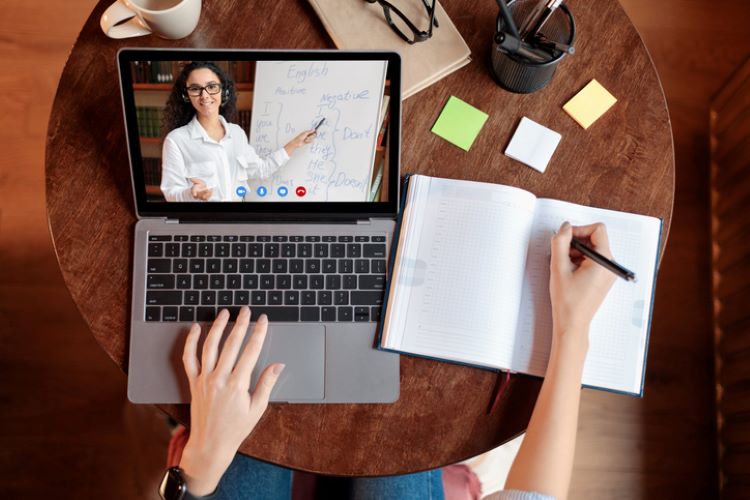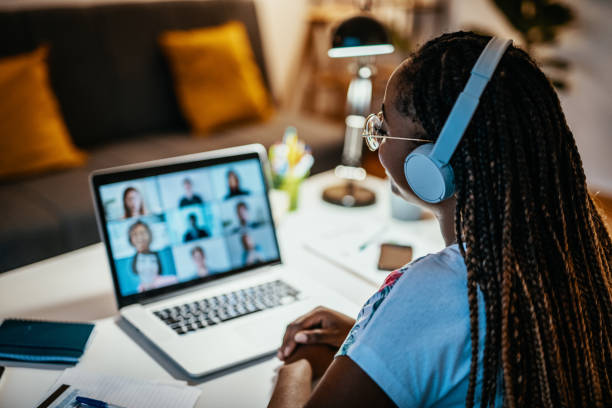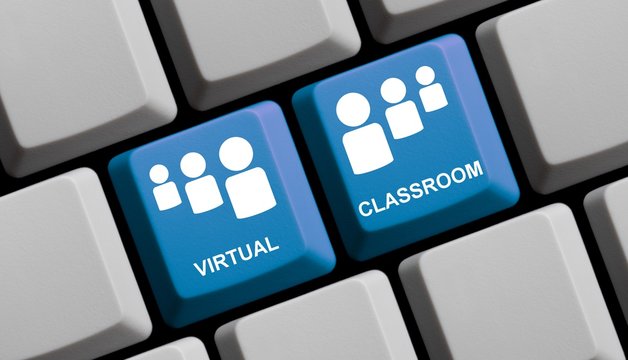In an era where digital technology permeates every aspect of our lives, education has undergone a significant transformation. The traditional classroom has expanded into the virtual realm, offering boundless opportunities for educators and learners alike. As the demand for remote learning solutions continues to surge, teachers must embrace different virtual classroom ideas to engage and inspire their students.
In this blog post, we’ll explore seven dynamic virtual classroom ideas tailored to meet the diverse needs of modern educators.
7 Effective Virtual Classroom Ideas for Teachers
Virtual classrooms are not the same as traditional ones. Unlike conventional classrooms, teachers are students are present here with a remote set-up. Different challenges occur. Also, there are different opportunities to look for in virtual classrooms. Hence, it is important for teachers to learn effective methods to run such classes successfully. Here are top 7 virtual classroom ideas for teachers to help you in this matter.
1. Interactive Whiteboard Collaboration
With virtual classroom platforms becoming increasingly sophisticated, teachers can leverage interactive whiteboards to facilitate collaborative learning experiences. It is one of the most poplar virtual classroom ideas for teachers. Whether it’s brainstorming sessions, problem-solving activities, or group projects, the interactive whiteboard serves as a versatile tool for fostering student engagement and interaction. Teachers can encourage students to contribute ideas, solve problems in real-time, and visualize complex concepts through interactive diagrams and multimedia content.
2. Gamification Elements
Integrating gamification elements into virtual classrooms can transform learning into an immersive and enjoyable experience. Teachers can incorporate game-based quizzes, competitions, and challenges to motivate students and reinforce key concepts. By earning rewards, leveling up, and unlocking achievements, students are incentivized to actively participate and strive for academic excellence. Gamification enhances student motivation. Also, it fosters a sense of camaraderie and healthy competition among peers.
3. Virtual Field Trips
It is interesting to break free from the confines of the traditional classroom and embark on virtual field trips to destinations across the globe. With virtual reality (VR) technology and interactive simulations, teachers can transport students to historical landmarks, natural wonders, and cultural sites without leaving their seats. Whether exploring the depths of the ocean, touring ancient civilizations, or venturing into outer space, virtual field trips offer unparalleled opportunities for experiential learning. Also, students get cross-curricular exploration.

4. Flipped Classroom Approach
The flipped classroom approach is one of the effective virtual classroom ideas for teachers to empower students to take ownership of their learning journey. Instead of delivering lectures during class time, teachers can create pre-recorded video lessons and instructional materials for students to review independently at home. Class time is then dedicated to interactive discussions, collaborative activities, and hands-on projects that reinforce learning objectives. Moreover, the flipped classroom model promotes personalized learning, fosters critical thinking skills, and maximizes instructional time in the virtual classroom setting.
5. Peer-to-Peer Collaboration Platforms
Peer-to-peer collaboration and knowledge sharing through dedicated online platforms and discussion forums are other virtual classroom ideas for teachers. As a teacher, you can create virtual study groups, collaborative projects, and peer review sessions where students can collaborate, provide feedback, and learn from one another. By fostering a sense of community and collective responsibility, peer-to-peer collaboration platforms promote social learning, communication skills, and teamwork in the virtual classroom environment.
6. Virtual Guest Speakers and Experts
Enrich students’ learning experience by inviting virtual guest speakers and subject matter experts. They can share their insights and expertise with students. Also, they can offer unique perspectives, real-world examples, and career guidance that complement the classroom curriculum. Thus, virtual guest lectures expose students to diverse viewpoints. Also, they inspire curiosity, passion, and lifelong learning beyond the virtual classroom.
7. Multimedia Presentations and Projects
It’s time to harness the power of multimedia presentations and projects to unleash students’ creativity and communication skills. By creating digital presentations, videos, podcasts, or interactive websites, students can demonstrate their understanding of course material in innovative and engaging ways. Also, teachers can provide guidelines, templates, and resources to support students in creating multimedia projects that showcase their knowledge, research, and creativity. Moreover, multimedia presentations and projects encourage self-expression, digital literacy, and multimedia storytelling in the virtual classroom setting.

Final Words
So, various virtual classroom ideas for teachers play a pivotal role in shaping the future of learning. By embracing interactive technologies, gamification strategies, and collaborative platforms, educators can create dynamic and immersive learning experiences that inspire curiosity, creativity, and lifelong learning.
Whether it’s exploring virtual field trips, flipping the classroom, or hosting virtual guest speakers, the possibilities are endless in the virtual classroom. As we continue to navigate the challenges of remote learning, let us harness the power of innovation and imagination to redefine education for generations to come.
FAQs
- How can I ensure inclusivity and accessibility in my virtual classroom?
You, as a teacher, may inquire about strategies for accommodating diverse learning needs. Also, learn about providing captioning for videos, ensuring compatibility with assistive technologies. Thus, you can promote an inclusive virtual learning environment.
- What are some effective ways to assess student learning in a virtual classroom?
There are diverse assessment methods tailored to online learning environments, including quizzes, interactive polls, virtual discussions, and project-based assessments.
- How can I make my virtual classroom engaging for students?
Well, the need for engaging virtual classroom ideas for teachers is common. So, some of such engaging ideas include interactive activities, multimedia presentations, and gamification strategies. They keep students motivated and help them actively participate in online learning.
- How can I adapt traditional teaching techniques for online instruction?
You, as a teacher, may seek advice on modifying traditional teaching methods, such as lectures, discussions, and hands-on activities. Thus, you can find ways that suit the virtual classroom environment and engage remote learners effectively.
- How can I address the challenges of teaching remotely, such as student engagement and technology issues?
There are multiple strategies to overcome common challenges associated with virtual teaching. Some of them include troubleshooting technical issues, providing additional support for struggling students, and promoting self-directed learning.

Comments 0